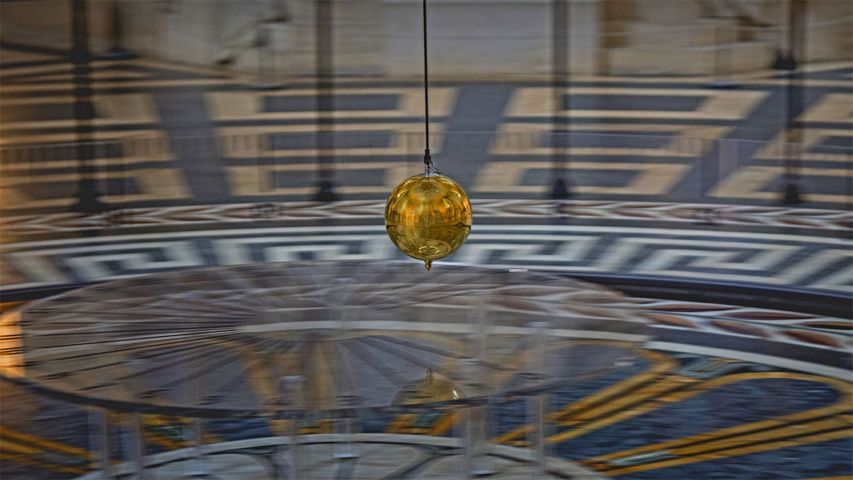Foucault pendulum at the Panthéon in Paris, France
© Adolf/Adobe Stoc
Take this for a spin...
In 1851, when French physicist Léon Foucault performed his pendulum experiment in Paris, he became the first to prove what many scientists of his day already suspected—that the Earth spins on an axis. He conducted his first experiments 170 years ago, in early January 1851, with a relatively small prototype in the cellar of his home. Just a month later, Foucault performed his most famous pendulum demonstration, using a 62-pound spherical weight attached to a 220-foot wire, which was hung from the dome of the Panthéon, a Parisian monument.
As the pendulum swung back and forth in a fixed plane over a compass-like circle of sand below it, onlookers watched as the circle rotated. This in turn demonstrated that the Earth itself was rotating underneath it, and by extension, everyone watching was rotating as well, spinning on the surface of the great blue marble around its axis. All these years later, replicas of Foucault’s pendulum can still be found in museums around the world, continuing to demonstrate this elegant scientific proof. The pendulum seen here, an exact copy of the original, has been on display in Paris since 1995.
Related Images
Bing Today Images







 Gadisar Lake, Jaisalmer, Rajasthan
Gadisar Lake, Jaisalmer, Rajasthan
 Knuthöjdsmossen nature reserve, Sweden
Knuthöjdsmossen nature reserve, Sweden
 Baobab trees at sunset, Avenue of the Baobabs, Madagascar
Baobab trees at sunset, Avenue of the Baobabs, Madagascar
 Mysuru Palace, Mysuru, Karnataka
Mysuru Palace, Mysuru, Karnataka
 Samuel Beckett Bridge, Dublin, Ireland
Samuel Beckett Bridge, Dublin, Ireland
 Château de Sully-sur-Loire, Centre-Val de Loire, France
Château de Sully-sur-Loire, Centre-Val de Loire, France
 Mount Fuji at sunrise, Lake Kawaguchi, Japan
Mount Fuji at sunrise, Lake Kawaguchi, Japan
 Icicles of Misotsuchi, Chichibu, Japan
Icicles of Misotsuchi, Chichibu, Japan